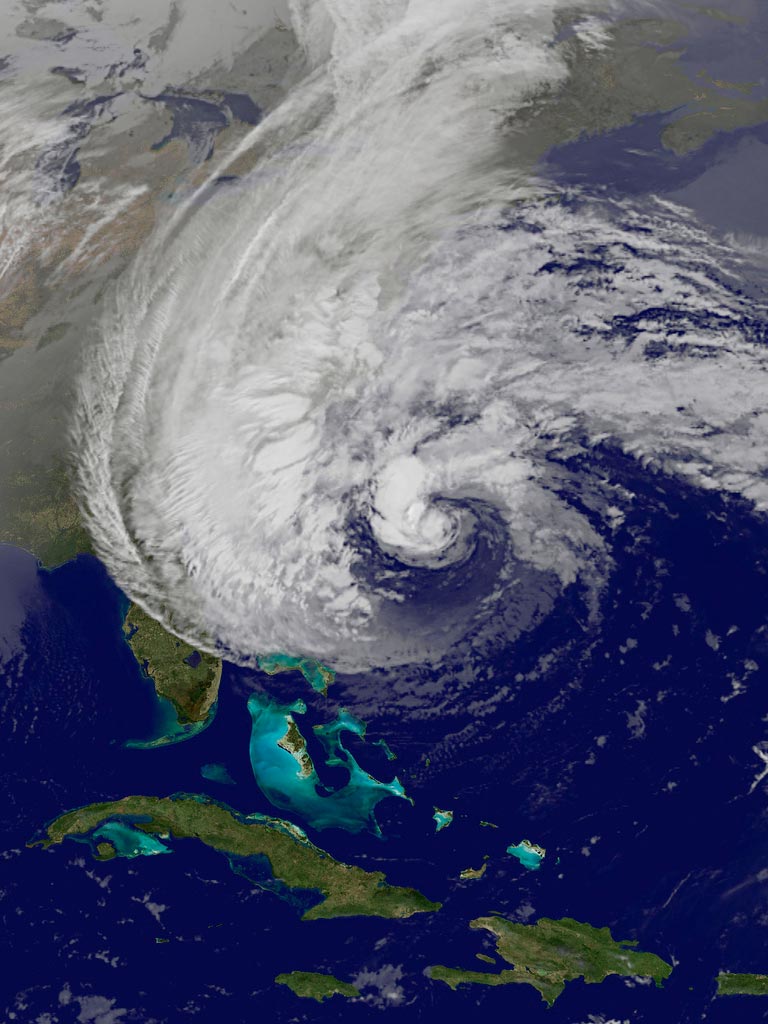Sandy: A Storm with Many Faces, Many Names

Sandy was a storm with perhaps more names than any in history. She was, at various moments, Hurricane Sandy, the Frankenstorm, Superstorm Sandy, the October Surprise and several other things both official and unofficial, some of them unprintable. By any name, she was a huge, awful and deadly storm and one for the record books.
Yes, "she."
Sandy was an "it" to many reporters, because the Associated Press Stylebook, used as a guide by most newspapers and many online media companies, says the masculine or feminine pronoun is not to be used in referring to a storm.
To hurricane aficionados and weather buffs, however, Sandy was a she because that's what the World Meteorological Organization determined. That body picks hurricane names that are reused in alphabetical batches every six years. The process began in 1953 with female names only, and in 1979 began to include male names, alternating male-female with each storm. The one that formed before Sandy was Rafael, and the next name on the list is Tony (the male version), followed by Valerie. (The letters Q, U, X, Y and Z are not used.)
Whatever you called her, Sandy started out as Tropical Depression #18 on Oct. 22. The swirling mass of clouds gained the name Sandy upon becoming a tropical storm. Most of us became aware of it when sustained winds hit 74 mph and she became Hurricane Sandy.
According to reporter Douglas M. Main on OurAmazingPlanet, on Oct. 25, NOAA forecaster James Cisco wrote that the storm was likely to form a "combined gyre" or a "hybrid vortex" ― thus "inviting perhaps a ghoulish nickname for the cyclone along the lines of 'Frankenstorm,' an allusion to Mary Shelley's gothic creature of synthesized elements."
But Cisco ignored Sandy's gender. An Oct. 26 statement from NASA noted that "because Sandy is a woman's name, the storm could be considered a 'bride of Frankenstorm.'"
Get the world’s most fascinating discoveries delivered straight to your inbox.
Both names were clever, but neither would stick. Sandy would speed up unexpectedly — ultimately reaching a forward speed of nearly 30 mph — and make landfall two evenings before Halloween. In the process she joined up with wintry systems over North America and was designated Superstorm Sandy. Before coastal victims had a chance to assess damage, Sandy was morphing into a blizzard in the mountains of the Northeast. (A couple of names that surfaced along the way but didn’t gain traction: "blizzacane" and "snor'eastercane.")
Amid all this — the timeline gets very messy — as she came ashore, Sandy was slapped with the far less glamorous but official label Post-Tropical Cyclone Sandy.
It all happened with such frightening rapidity and resulted in such harrowing destruction across such a wide area that, well, history may simply refer to Sandy as the Storm of the Century, though that term has been applied more than once just in the past decade.
One thing you can bank on: You'll never meet another Sandy. Her name is sure to be retired, joining the likes of Katrina, Andrew and Hugo in the Hurricane Hall of Infamy.
Follow LiveScience on Twitter @livescience. We're also on Facebook & Google+.
Robert is an independent health and science journalist and writer based in Phoenix, Arizona. He is a former editor-in-chief of Live Science with over 20 years of experience as a reporter and editor. He has worked on websites such as Space.com and Tom's Guide, and is a contributor on Medium, covering how we age and how to optimize the mind and body through time. He has a journalism degree from Humboldt State University in California.



